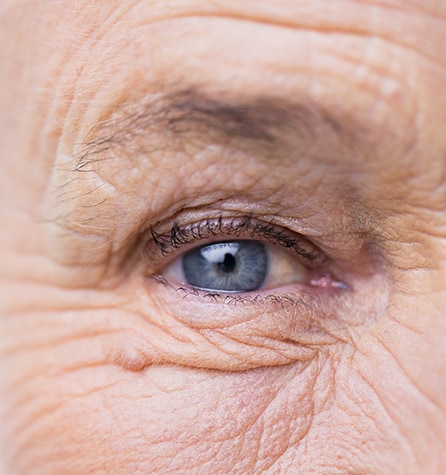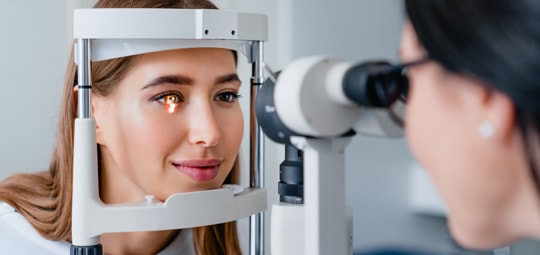Common Types of Eye Disease & Conditions
Glaucoma
Glaucoma is one of the most common eye diseases, affecting nearly 3 million Americans. Glaucoma usually occurs when intraocular pressure (IOP) rises due to fluid buildup in the eye, but it can also happen even if your IOP levels are within normal ranges.
There are many types of glaucoma, including open-angle glaucoma, closed-angle glaucoma, and normal-tension glaucoma.
For more information on this disease, please visit our Glaucoma page!
Macular Degeneration
Macular degeneration, also known as age-related macular degeneration or AMD, is a common eye disease that generally develops in adults over 55, but other health and risk factors can contribute to its development. As it forms, it can affect your macula and impact your ability to read, drive, and recognize faces.
There are 2 common types of AMD:
- Dry AMD occurs when yellowish deposits of lipids, known as drusen, form underneath your macula, causing it to deteriorate over time. Dry AMD is the most common type of the disease and usually develops slowly.
- Wet AMD occurs when delicate blood vessels form in the retina. These vessels can break easily and leak fluid underneath your macula, severely damaging it over time. Wet AMD can happen rapidly, making it a medical emergency that requires immediate attention. This disease is less common than dry AMD but is responsible for over 90% of AMD-related vision loss.
Diabetic Retinopathy
Diabetic retinopathy is an eye disease that could develop if you have diabetes. Higher blood sugar content can damage the blood vessels in your retina, causing them to swell or leak fluid.
In more serious cases, your retina may compensate for the blood loss by growing newer but delicate blood vessels. When these blood vessels break, they damage your retina and create scar tissue, increasing your chance for retinal detachment.
Please visit our Diabetic Eye Exams page for more information!
Cataracts
Cataracts are common eye conditions that can develop as you age. They occur when the proteins in your eye’s lens change over time, restructuring the lens to be more rigid and opaque, resulting in a cloudy or milky appearance. This milkiness prevents light from passing through your eye and to your retina, leading to hazy or blurry vision.
Please visit our Cataracts page for more information!
Conjunctivitis
Conjunctivitis, also known as pink eye, is a common eye condition that occurs for various reasons. Conjunctivitis is known for causing eye redness, eye discharge, and irritation.
The 3 most common type of conjunctivitis are:
- Allergic conjunctivitis, caused by dust, pollen, or pet dander. You can usually manage these symptoms using allergy medication.
- Viral conjunctivitis, caused by a viral infection. It has no known cure and will need to run its course.
- Bacterial conjunctivitis, caused by bacterial infections that need antibiotics.
Both viral and bacterial conjunctivitis are highly contagious. Please try to avoid too much contact with other people and using communal items.










